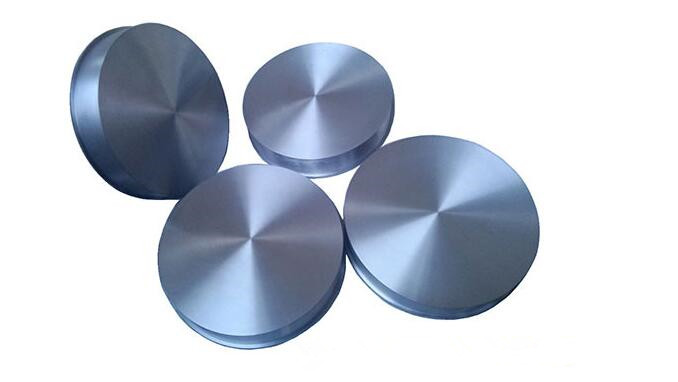To enhance sputtering efficiency and ensure the quality of deposited films, extensive experiments have shown that there are specific requirements for ceramic sputtering targets:
PurityThe purity of ceramic sputtering targets significantly impacts the performance of sputtered films. Higher purity in ceramic targets results in better uniformity and consistency in batch film deposition. With the rapid development of the semiconductor industry, where silicon wafer sizes have reached 12 inches and wiring widths have shrunk to 0.13 μm, there are stringent requirements for the uniformity of deposited films. For instance, the purity of ceramic targets must be greater than 4N. ITO (Indium Tin Oxide) targets used in display panels also demand high purity, with both In2O3 and Sn2O3 requiring purities exceeding 4N. In the case of ceramic targets for magnetic films, a purity of no less than 3N is required. Impurities within the sputtering target can serve as the primary source of contamination for deposited films. For example, alkali metal ions (Na+, K+) can become mobile ions within insulating layers (SiO2), degrading device performance, and their content should be kept below 0.01 ppm (by weight).

1.2 DensityTo reduce the presence of pores within ceramic sputtering targets and improve film performance, high target density is generally required. Target density not only affects the deposition rate during sputtering but also influences the electrical and optical properties of sputtered films. Denser targets result in higher particle density during sputtering, reduced discharge phenomena, and improved film performance. Furthermore, increasing the target's density and strength allows it to withstand thermal stresses during the sputtering process. Thus, improving target density is a key technology in the production of ceramic sputtering targets.
1.3 Composition and Structural UniformityTo ensure the uniformity of sputtered films, especially in complex large-area coating applications, it is crucial to have good uniformity in the composition and structure of the sputtering targets. This is a significant indicator of ceramic target quality. For instance, ITO targets require uniform compositions of In2O3 and SnO2, with ratios like 93:7 or 91:9 (molecular ratio) to ensure quality. The microstructure's uniformity in sputtering targets also has a substantial impact on deposition rates, film quality, and thickness distribution during sputtering. Research has shown that sputtering targets with fine-grained structures result in higher deposition rates than those with coarse-grained structures. Therefore, when the grain distribution on the target's surface is uneven, it leads to non-uniform film thickness.
Preparation of Ceramic Sputtering Targets
The production of ceramic sputtering targets follows the process outlined in Figure 1. In addition to strict control over the purity and composition of raw materials and the design dimensions of molded materials, it is essential to control the material's forming and sintering methods. Common forming methods include dry pressing and cold isostatic pressing. Dry pressing may face challenges in producing large bulk targets, with issues like mold wear, complex processing, uneven target density, and the potential for cracking and delamination. Cold isostatic pressing, on the other hand, offers advantages in high-density target production due to its convenience in mold making, but high-purity requirements for ceramic targets may necessitate the addition of sintering aids. Using this method, sintering occurs at high temperatures (under pure oxygen atmospheres), resulting in ITO ceramic sputtering targets with apparent densities reaching 95% of theoretical density. In the forming process, the preforming pressure is also a critical factor. A low preforming pressure leads to lower target density, which is favorable for sintering, but it compromises mechanical strength and can lead to fractures, which are not conducive to thin film processes.
Sintering of ceramic targets is typically achieved through methods such as pressureless sintering, hot isostatic pressing, and controlled atmosphere sintering. Among them, hot isostatic pressing combines the advantages of hot pressing and isostatic pressing. This method involves applying pressure to the powder in a thermoplastic state, resulting in low deformation resistance, shorter forming times, and better control over grain growth. It is the primary method for producing high-density ceramic sputtering targets. However, this method requires expensive equipment and has limited productivity. Sintering of non-oxide material targets like Si3N4 and SiC is conducted in nitrogen and inert gas atmospheres to prevent oxidation.
Sintering temperature, heating rate, cooling rate, and sintering atmosphere are all crucial factors influencing target performance. Excessively high sintering temperatures can lead to the melting or over-sintering of certain substances within the target, affecting subsequent oxygen treatments and phase transitions. Conversely, sintering at too low a temperature can result in target densification issues. Slow cooling processes and extended high-temperature atmosphere treatments can effectively improve the quality of YBCO high-temperature superconducting targets, preventing issues like incomplete sintering due to phase transitions, target deformation, fine cracking on the target surface, and even target fracture. Researchers from the Beijing General Research Institute for Nonferrous Metals, for instance, used preforming pressures of 20–40 MPa/cm2, sintering temperatures of 950–980°C for 10–15 hours, and a slow cooling rate of 5°C/min to obtain well-performing YBCO high-temperature superconducting targets.
The preparation of ceramic slurry requires the use of highly durable zirconia oxide beads due to extended grinding times in a sand mill.

Submit your demand,
we will contact you ASAP.

Sanxin New Materials Co., Ltd. focus on producing and selling ceramic beads and parts such as grinding media, blasting beads, bearing ball, structure part, ceramic wear-resistant liners, Nanoparticles Nano Powder

